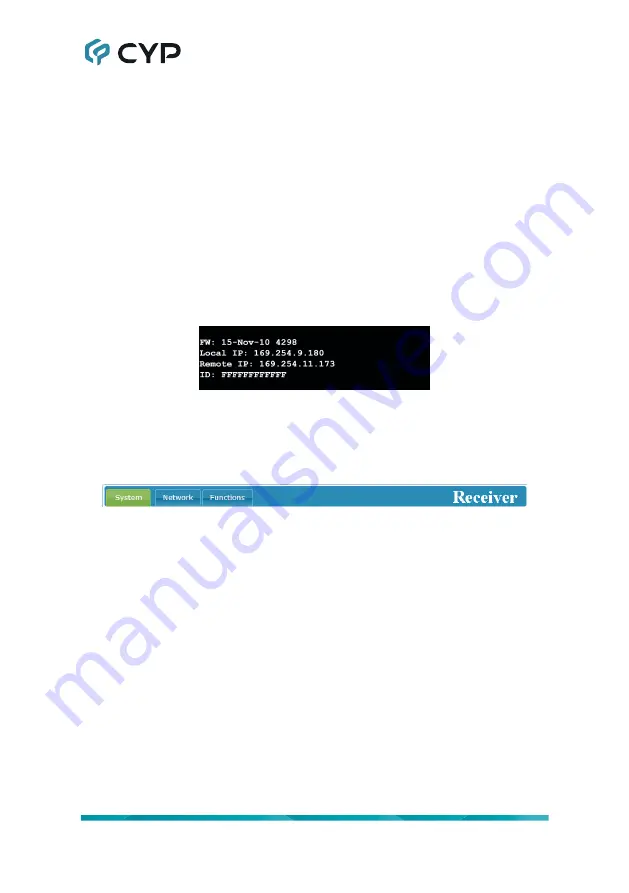
7
• WebGUI Overview
Each unit contains 2 independent AVoIP receivers, and each of those
is controlled by their own WebGUI interface which may be accessed by
opening a standard web browser on a PC and typing in the IP address of
the unit you wish to connect to. If you do not already know the IP addresses
of the units in your system, you can discover the IP addresses by using the
Discovery Tool, or by disconnecting the HDMI inputs in a connected system
and connecting an HDMI display to each of the receiver’s outputs. Once the
source is lost, each connected display will output a 640×480 black screen
with OSD text at the bottom identifying its own IP address (Local IP), as
well as the IP address of the transmitter (Remote IP) that shares the same
broadcasting channel with it. After obtaining the IP address information,
reconnect the HDMI sources to return the unit to normal operation.
Once you have connected to a unit’s WebGUI, you will be presented with a
screen containing multiple tabs for each functionality area of the unit. To view
the contents of a tab, click on the appropriate button at the top of the window.
The individual tabs and functions will be introduced in the following sections.
Note: Audio/Video over IP streaming can use a large amount of bandwidth
(especially at higher resolutions) and a Gigabit Ethernet network switch
with jumbo frame support and IGMP snooping is required. A professional
managed switch with VLAN support is strongly recommended. It is strongly
suggested to avoid mixing your regular network traffic with AVoIP streaming
traffic and the AVoIP traffic should exist within a separate subnet, at the
minimum.



























